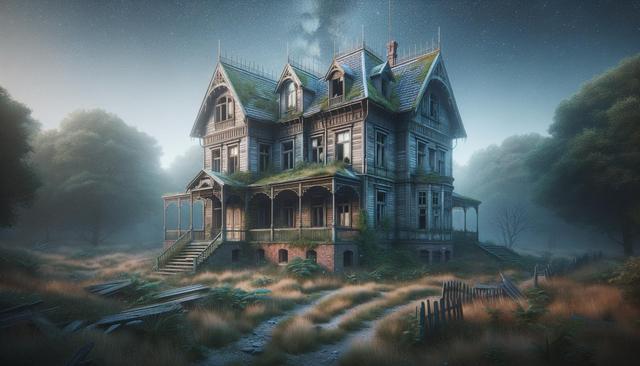The Fate of Abandoned Houses
When a property is left unoccupied for an extended period, it becomes an abandoned house. These structures fall into disrepair due to various reasons, such as financial hardship, inheritance complications, or natural disasters. Over time, nature begins to reclaim the space, and without regular maintenance, roofs collapse, walls crumble, and vegetation takes over. From a legal perspective, abandoned homes often become entangled in ownership disputes, unpaid taxes, or liens, making it difficult to determine who has the right to sell or restore the property.
Local governments sometimes intervene by placing these properties into land banks or auctioning them off to recover unpaid property taxes. In some cases, they may be demolished if deemed unsafe. However, others remain untouched for years, becoming part of the urban or rural landscape and attracting curious onlookers and potential investors alike.
Why Houses Are Abandoned
The reasons behind house abandonment are often more complex than they appear. Economic downturns, family disputes over inheritance, or even crime can lead to properties being vacated indefinitely. Some common causes include:
- Foreclosure due to unpaid mortgages or property taxes
- Natural disasters rendering the home uninhabitable
- Legal issues, such as probate complications
- Relocation without the ability or intent to sell the property
In some instances, the original owners may have passed away with no known heirs, leaving the property in a state of legal limbo. This can make it difficult for new owners to step in, even if they are interested in restoration or redevelopment.
The Risks of Entering an Abandoned Home
While exploring an abandoned house might sound like an adventure, it’s important to be aware of the risks involved. Aside from legal consequences—such as trespassing—there are also physical dangers. Structural instability is a major concern, as floors or ceilings may collapse without warning. Additionally, abandoned homes often have mold, asbestos, or other hazardous materials.
Other risks include:
- Exposure to wildlife such as rodents or insects
- Sharp debris or broken glass
- Risk of encountering squatters or illegal activity
For these reasons, it’s crucial to seek permission from the rightful owner or local authorities before entering an abandoned property. In some areas, urban exploration groups operate with consent from property owners, providing a safer and more legal alternative to going it alone.
Opportunities in Redevelopment
Despite the risks, abandoned homes can present valuable opportunities for redevelopment. Some investors see potential in restoring these properties and selling or renting them. Local governments may offer incentives to individuals or organizations willing to revitalize neglected areas, such as tax breaks, grants, or reduced purchase prices for properties held in public trusts.
Potential redevelopers should consider:
- Conducting a thorough inspection to assess the condition
- Researching the title and ownership history
- Reviewing zoning laws and building codes in the area
- Calculating realistic renovation and holding costs
With careful planning and legal guidance, restoring an abandoned house can benefit not only the investor but also the surrounding community by improving safety, aesthetics, and property values.
Preserving History and Stories
Many abandoned houses carry historical significance or personal stories that make them more than just empty buildings. In some cases, local historical societies become involved in efforts to preserve these structures. Photographers, historians, and writers are often drawn to such places, piecing together the lives once lived within their walls through artifacts, architecture, and local records.
Preservation efforts can include:
- Documenting the structure’s history before renovation or demolition
- Working with preservation organizations to secure funding
- Turning the property into a museum or cultural site
Whether kept as a relic or transformed into something new, each abandoned house has a story to tell. Preserving these stories not only honors the past but also enriches the cultural fabric of the community.
Conclusion: Exploring with Awareness and Purpose
Abandoned houses stir curiosity and imagination, offering glimpses into forgotten lives and untapped potential. However, they also come with challenges—from legal hurdles to safety concerns. For those considering exploring or investing in such properties, it’s essential to approach the process with research, caution, and respect for both the structure and its history. Whether you’re an urban explorer, a preservationist, or a would-be homeowner, understanding what happens to abandoned houses is the first step toward making informed and responsible decisions.




Leave a Reply